

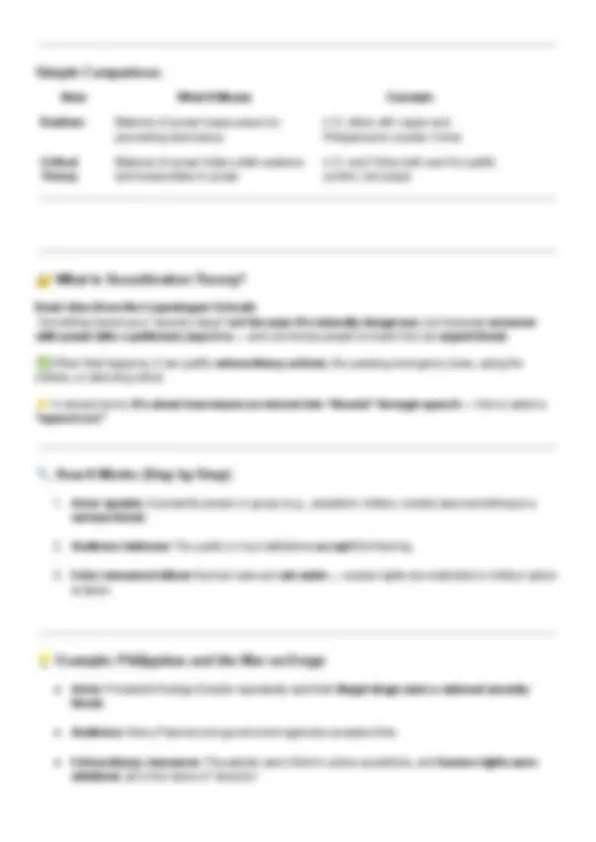
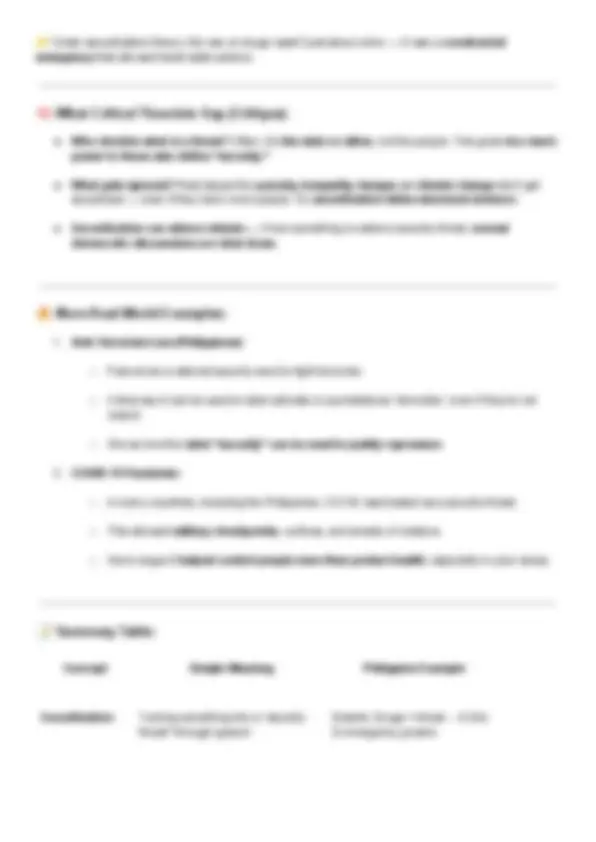
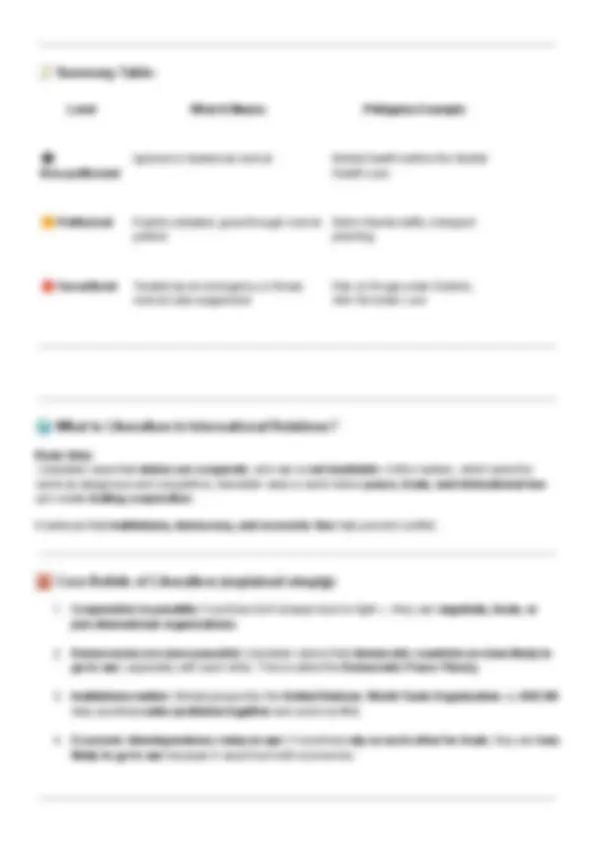
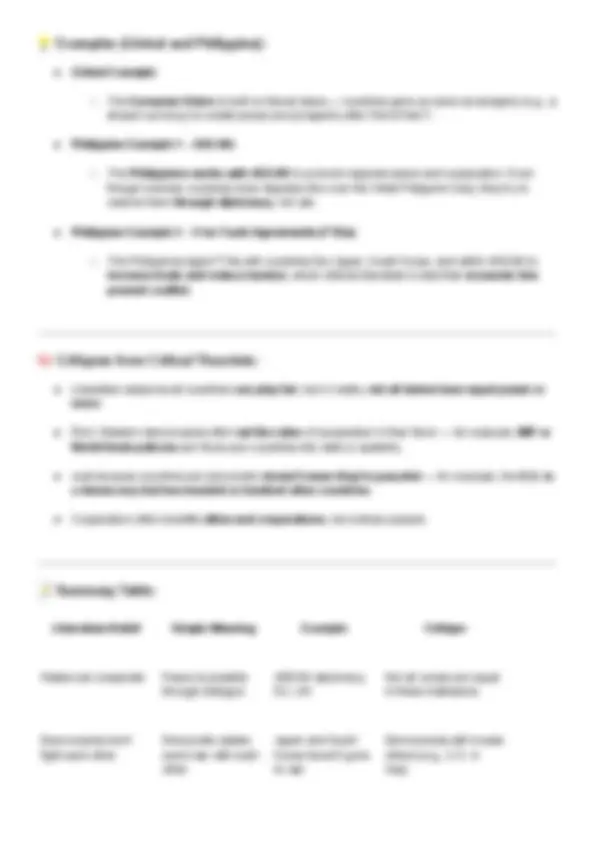
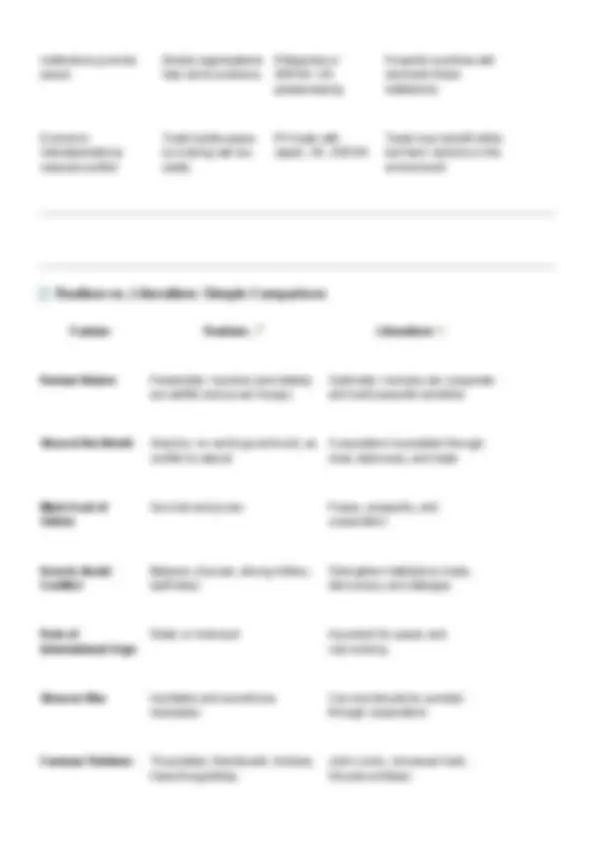
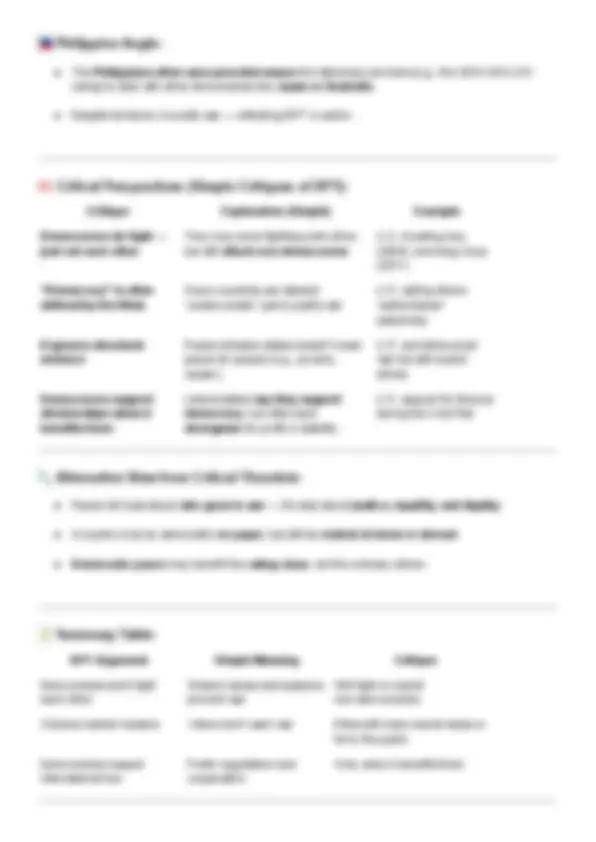

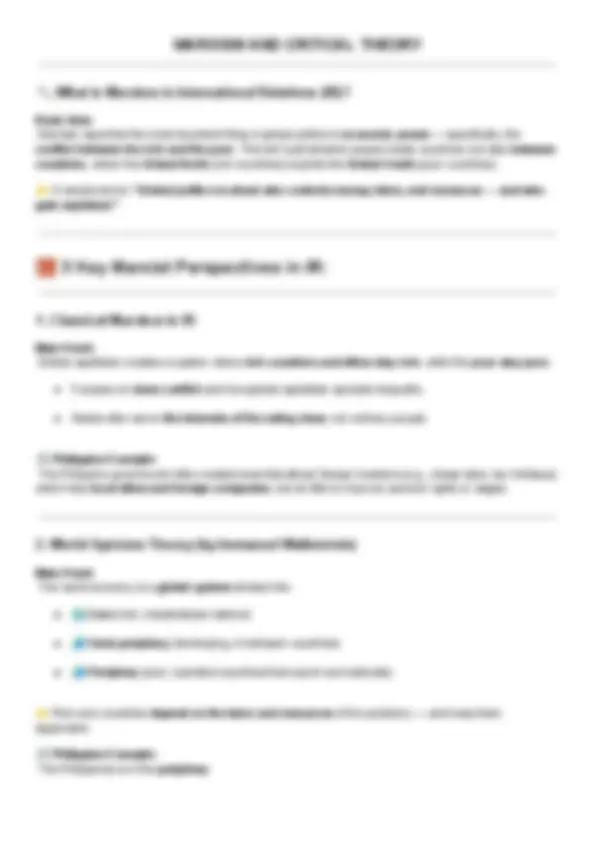
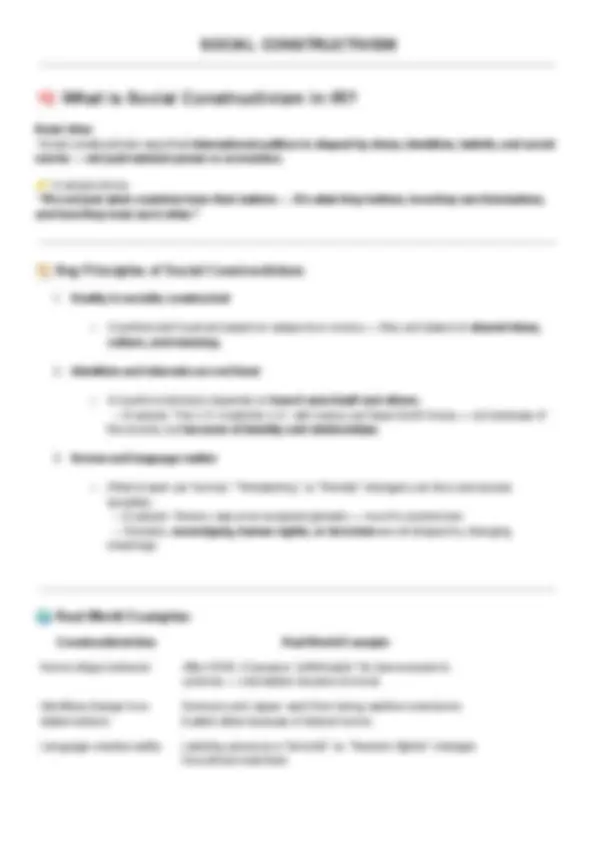
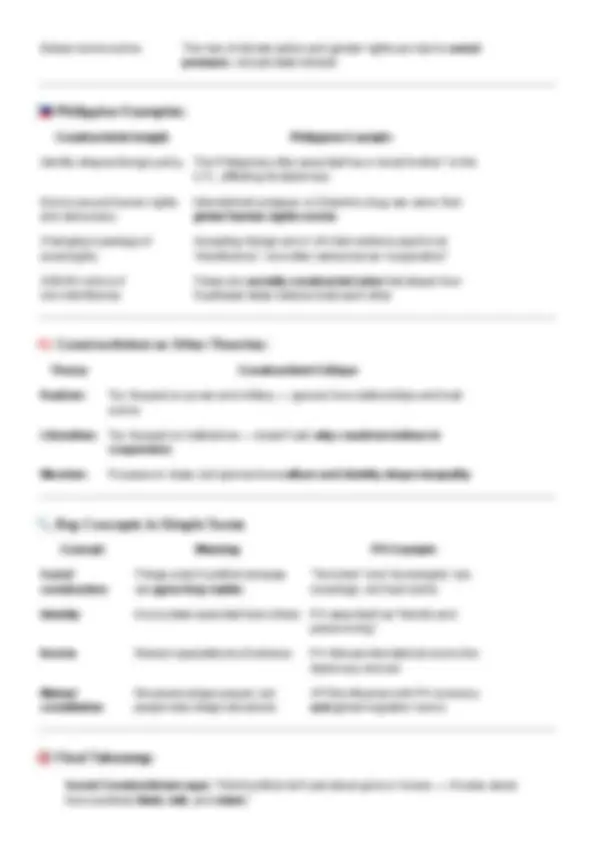

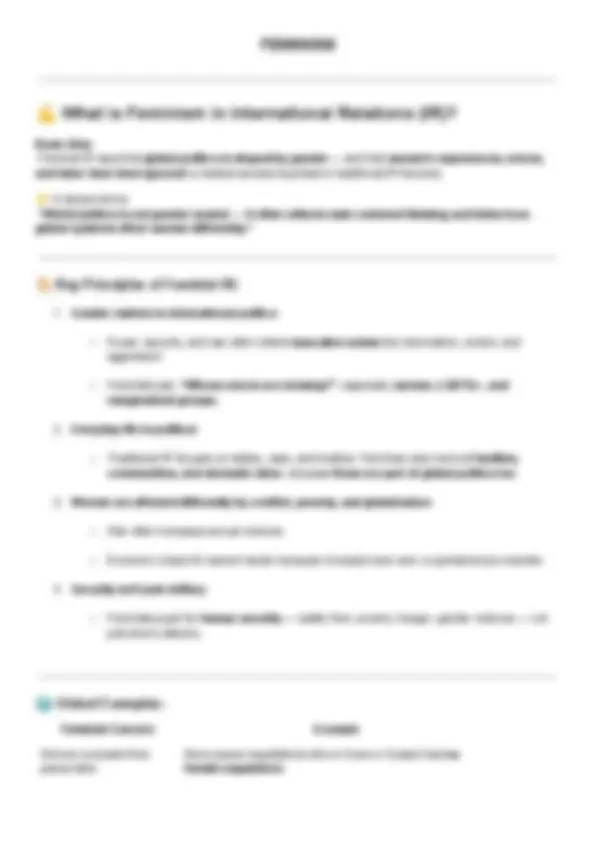
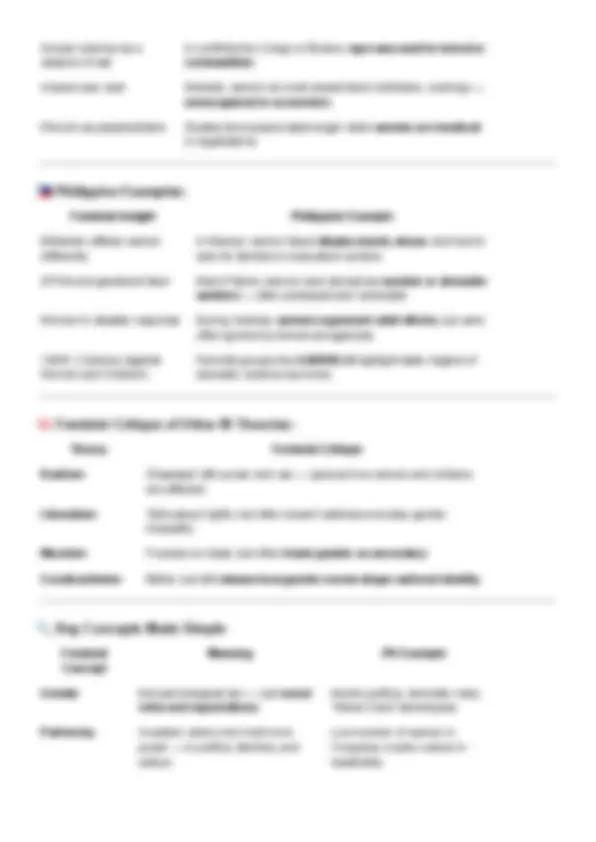
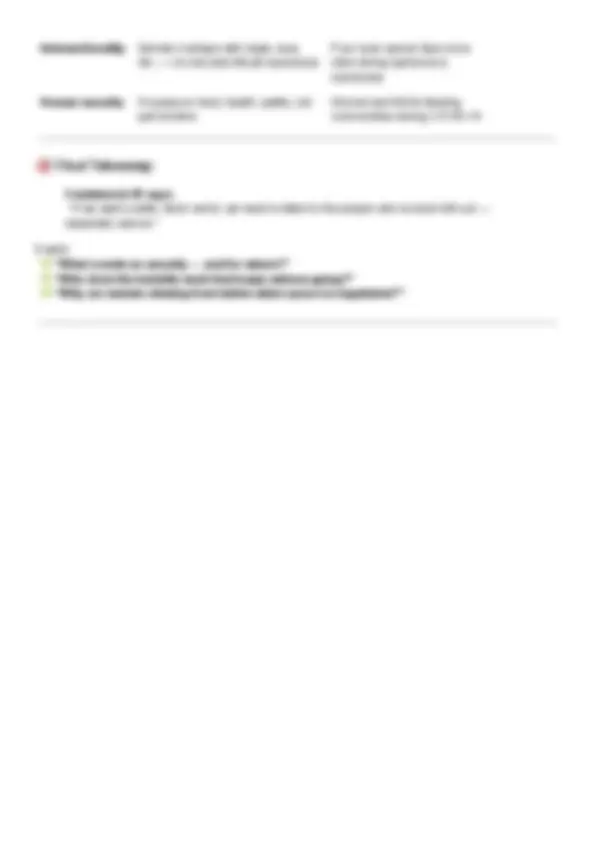


Study with the several resources on Docsity

Earn points by helping other students or get them with a premium plan


Prepare for your exams
Study with the several resources on Docsity

Earn points to download
Earn points by helping other students or get them with a premium plan
Community
Ask the community for help and clear up your study doubts
Discover the best universities in your country according to Docsity users
Free resources
Download our free guides on studying techniques, anxiety management strategies, and thesis advice from Docsity tutors
Ace IR with Confidence! These study notes cover everything you need for your Introduction to International Relations course—from classical theories like Realism and Liberalism to contemporary ideas such as Constructivism, Feminism, and Postcolonialism. Organized, concise, and easy to digest, this guide breaks down key concepts, scholars, and debates so you can review smarter and understand faster. Perfect for exams, recits, or anyone who wants a strong grasp of global politics in theory and in practice.
Typology: Study notes
1 / 23

This page cannot be seen from the preview
Don't miss anything!
















Realist belief: The state is the key player in international relations. It acts on behalf of its own national interest, and no other actor matters as much.
Expanded Critique:
● This view ignores other powerful actors. In today’s world, non-state actors — like multinational corporations (e.g., Facebook, Shell) , international organizations (e.g., UN, WHO) , and even terrorist groups (e.g., ISIS) — can influence global politics , sometimes more than small or weak states.
● It also assumes that all states behave the same way, but countries have different values, goals, and histories. For example:
○ Switzerland follows a neutral foreign policy and avoids wars.
○ North Korea is aggressive and militarized.
○ The Philippines joins regional organizations like ASEAN to promote cooperation.
Concrete Example:
● During Typhoon Yolanda (Haiyan) , international aid from NGOs and the UN helped the Philippines more than military assistance from other states. This shows that non-state actors can play a huge role , especially in humanitarian efforts.
● In the COVID-19 pandemic , organizations like the World Health Organization (WHO) coordinated global responses — not just states.
Realist belief: The top priority of any state is survival — protecting its territory and people from threats, especially from other states. National security comes first.
Expanded Critique:
● Focusing only on survival can justify harmful actions. Some governments may suppress their people , limit freedoms, or invade neighbors — all in the name of “national security.”
● Not all states act purely for survival. Some take risks to uphold values , support peace, or help others even when not directly threatened.
Concrete Example:
● Russia’s invasion of Ukraine is often explained by realism: Russia acted to “protect” its sphere of influence and ensure its security near NATO countries. But critics say this survival claim is just a cover for aggression.
● On the flip side, New Zealand continues to invest in climate change initiatives and nuclear-free policies , even though these don’t relate directly to survival. They value global cooperation and long-term well-being.
Realist belief: Because there’s no world government , each state must defend itself. They build their own militaries, form alliances, and avoid relying too much on others.
Expanded Critique:
● This thinking often leads to the security dilemma : when one country strengthens its military, others feel threatened and do the same. This can increase tension and war , not safety.
● Realism underestimates how states can work together. In today’s world, many states rely on trust and cooperation , especially for things like trade, environment, and disaster response.
Concrete Example:
● In the West Philippine Sea , China builds military bases on artificial islands. Neighboring countries like the Philippines and Vietnam respond by strengthening their own defenses or seeking help from the U.S. This shows a self-help mentality causing more conflict.
● Meanwhile, the European Union (EU) is a successful case of cooperation. Member states have open borders, shared currency (Euro), and even a joint parliament. This goes against realism’s idea that states must always act alone.
3 S’s of Realism
What Realism Says
Simple Critique Concrete Example
Statism State is the main actor
Ignores NGOs, corporations, and different state behaviors
UN helping in Typhoon Yolanda; Facebook shaping elections
Survival State’s main goal is survival
Justifies bad actions; not all states prioritize survival only
Russia invading Ukraine vs. NZ focusing on climate change
View What It Means Example
Realism Balance of power keeps peace by preventing dominance
U.S. allies with Japan and Philippines to counter China
Critical Theory
Balance of power hides unfair systems and keeps elites in power
U.S. and China both use it to justify control, not peace
Basic Idea (from the Copenhagen School): Something becomes a “security issue” not because it’s naturally dangerous , but because someone with power (like a politician) says it is — and convinces people to treat it like an urgent threat.
✅ When that happens, it can justify extraordinary actions , like passing emergency laws, using the military, or silencing critics.
👉 In simple terms: It’s about how issues are turned into “threats” through speech — this is called a “speech act.”
● Actor: President Rodrigo Duterte repeatedly said that illegal drugs were a national security threat.
● Audience: Many Filipinos and government agencies accepted this.
● Extraordinary measures: Thousands were killed in police operations, and human rights were sidelined , all in the name of “security.”
👉 Under securitization theory, the war on drugs wasn’t just about crime — it was a constructed emergency that allowed harsh state actions.
● Who decides what is a threat? Often, it’s the state or elites , not the people. This gives too much power to those who define “security.”
● What gets ignored? Real issues like poverty, inequality, hunger, or climate change don’t get securitized — even if they harm more people. So securitization hides structural violence.
● Securitization can silence debate — Once something is called a security threat, normal democratic discussions are shut down.
○ Framed as a national security need to fight terrorism.
○ Critics say it can be used to label activists or journalists as “terrorists,” even if they’re not violent.
○ Shows how the label “security” can be used to justify repression.
○ In many countries, including the Philippines, COVID was treated as a security threat.
○ This allowed military checkpoints , curfews, and arrests of violators.
○ Some argue it helped control people more than protect health , especially in poor areas.
Concept Simple Meaning Philippine Example
Securitization Turning something into a “security threat” through speech
Duterte: Drugs = threat → EJKs & emergency powers
What it means: The issue is now part of public debate. It’s being discussed by politicians, in the media, and maybe in legislation. Policy decisions are made through regular political channels.
Example:
● Traffic and transport issues in Metro Manila are politicized. They are hot topics in elections, Congress hearings, and local planning.
● But they’re not treated as a national security emergency — they go through normal political processes (budget hearings, debates, etc.).
What it means: The issue is now treated as a security threat — like war or terrorism. It’s framed as urgent and dangerous , so extraordinary measures are allowed. Normal rules can be bypassed (like using the military or suspending rights).
Example:
● Illegal drugs during Duterte’s presidency were fully securitized.
○ The government said it was a threat to national survival.
○ This justified police killings, emergency operations, and removing checks and balances.
○ Normal politics was set aside in favor of security action.
● It’s dangerous when powerful groups can move issues up the spectrum just by saying they're threats.
● Real problems like hunger or climate change stay stuck at the bottom , while other issues (like drugs or dissent) are pushed to the top for political gain.
● This can lead to abuse of power , targeting of the poor, or ignoring long-term social needs.
Level What It Means Philippine Example
Non-politicized
Ignored or treated as normal Mental health before the Mental Health Law
🟠 Politicized Publicly debated, goes through normal politics
Metro Manila traffic, transport planning
🔴 Securitized Treated as an emergency or threat, normal rules suspended
War on Drugs under Duterte, Anti-Terrorism Law
Basic Idea: Liberalism says that states can cooperate , and war is not inevitable. Unlike realism, which sees the world as dangerous and competitive, liberalism sees a world where peace, trade, and international law can create lasting cooperation.
It believes that institutions, democracy, and economic ties help prevent conflict.
Institutions promote peace
Global organizations help solve problems
Philippines in ASEAN, UN peacekeeping
Powerful countries still dominate these institutions
Economic interdependence reduces conflict
Trade builds peace by making war too costly
PH trade with Japan, SK, ASEAN
Trade may benefit elites but harm workers or the environment
Feature Realism 🗡 Liberalism 🕊
Human Nature Pessimistic: humans (and states) are selfish and power-hungry
Optimistic: humans can cooperate and build peaceful societies
View of the World Anarchy: no world government, so conflict is natural
Cooperation is possible through laws, diplomacy, and trade
Main Goal of States
Survival and power Peace, prosperity, and cooperation
How to Avoid Conflict
Balance of power, strong military (self-help)
Strengthen institutions, trade, democracy, and dialogue
Role of International Orgs
Weak or irrelevant Important for peace and rule-making
View on War Inevitable and sometimes necessary
Can and should be avoided through cooperation
Famous Thinkers Thucydides, Machiavelli, Hobbes, Hans Morgenthau
John Locke, Immanuel Kant, Woodrow Wilson
Issue Realist Lens Liberal Lens
West Philippine Sea dispute
Build up navy, strengthen alliances (e.g., with U.S.)
Use ASEAN diplomacy, international law (e.g., UNCLOS ruling)
Foreign Relations Focus on national security, sovereignty
Join regional blocs and trade deals for mutual gain
Anti-Terrorism Law
Justified for state survival and national security
Criticized for violating rights and weakening democratic norms
War on Drugs Strong state action to protect society
Overreaction that violates human rights and democratic values
Climate Change Response
Low priority unless it affects security directly
Urgent global issue needing cooperation and shared solutions
Critique of Realism Critique of Liberalism
Leads to militarization and fear-based politics
Assumes all countries are equal — ignores global inequality
Justifies violence and ignores human rights
Benefits elites and Western powers more than the Global South
Doesn’t address structural issues (poverty, justice)
Cooperation may mask unequal power (e.g., in IMF, WTO decisions)
● The Philippines often uses peaceful means like diplomacy and law (e.g., the 2016 UNCLOS ruling) to deal with other democracies like Japan or Australia.
● Despite tensions, it avoids war — reflecting DPT in action.
Critique Explanation (Simple) Example
Democracies do fight — just not each other
They may avoid fighting each other, but still attack non-democracies
U.S. invading Iraq (2003), bombing Libya (2011)
“Democracy” is often defined by the West
Some countries are labeled “undemocratic” just to justify war
U.S. calling others “authoritarian” selectively
It ignores structural violence
Peace between states doesn’t mean peace for people (e.g., poverty, racism)
U.S. and allies avoid war but still exploit others
Democracies support dictatorships when it benefits them
Liberal states say they support democracy , but often back strongmen for profit or stability
U.S. support for Marcos during the Cold War
● Peace isn’t just about who goes to war — it’s also about justice, equality, and dignity.
● A country may be democratic on paper , but still be violent at home or abroad.
● Democratic peace may benefit the ruling class , not the ordinary citizen.
DPT Argument Simple Meaning Critique
Democracies don’t fight each other
Shared values and systems prevent war
Still fight or exploit non-democracies
Citizens restrain leaders Voters don’t want war Elites still make secret deals or lie to the public
Democracies respect international law
Prefer negotiation and cooperation
Only when it benefits them
| Liberal View : Democracies create peace. | Critical View : Maybe — but peace for whom, and at what cost?
● It exports raw goods (bananas, minerals) and labor (OFWs)
● It imports high-tech goods from core countries (U.S., Japan), staying economically dependent.
Main Point: Power isn’t just about military or money — it’s also about ideas and culture. The ruling class maintains power through hegemony — making its rule seem “normal” or “common sense”.
● People may accept inequality not by force, but because they’ve been taught that “this is just how the world works.”
● Critical theory asks: “Whose ideas are we taught to accept as true?”
🛠 Philippine Example: The Philippines is taught that being dependent on U.S. military and trade is “normal” or necessary. Even elite schools often teach Western views of economics and politics, not Filipino or anti-colonial perspectives. This is cultural hegemony in action.
Theory Marxist Critique
Realism Ignores how economic inequality and capitalism cause wars, not just state rivalry
Liberalism Assumes free markets and institutions are fair, but they mostly benefit the rich
DPT “Democracies” still exploit poor countries or support dictators when convenient
Marxist Concept
Meaning (Simple) Philippine Example
Class struggle Conflict between the rich and poor Landowners vs. farmers; employers vs. workers
Global capitalism
A system that enriches the Global North at the South’s expense
OFWs fuel economy, but families are separated and underpaid
World-Systems Theory
The world is divided into core, semi-periphery, and periphery
PH is stuck in periphery — cheap labor, raw exports
Hegemony Dominance through consent and ideas, not just force
U.S. bases seen as “necessary” even when they hurt sovereignty
Cultural hegemony
Ruling class ideas become “common sense”
Pro-rich, anti-poor policies accepted as “normal”
Marxism says : You can’t fix war or global injustice unless you fix the economic system that profits from inequality.
Gramsci adds : It’s not just tanks and money — it’s also how people are made to believe the system is fair , even when it isn’t.
World-Systems Theory shows : The entire global economy is built to keep some countries rich and others poor.
Global norms evolve The rise of climate action and gender rights are due to social pressure , not just state interest
Constructivist Insight Philippine Example
Identity shapes foreign policy The Philippines often sees itself as a “small brother” to the U.S., affecting its diplomacy
Norms around human rights and democracy
International pressure on Duterte’s drug war came from global human rights norms
Changing meanings of sovereignty
Accepting foreign aid or UN interventions used to be “interference”; now often welcomed as “cooperation”
ASEAN norms of non-interference
These are socially constructed rules that shape how Southeast Asian nations treat each other
Theory Constructivist Critique
Realism Too focused on power and military — ignores how relationships and trust evolve
Liberalism Too focused on institutions — doesn’t ask why countries believe in cooperation
Marxism Focuses on class, but ignores how culture and identity shape inequality
Concept Meaning PH Example
Social construction
Things exist in politics because we agree they matter
“Terrorism” and “sovereignty” are meanings, not fixed truths
Identity How a state sees itself and others PH sees itself as “friendly and peace-loving”
Norms Shared expectations of behavior PH follows international norms like diplomacy and aid
Mutual constitution
Structures shape people, but people also shape structures
OFWs influence both PH economy and global migration norms
Social Constructivism says : “World politics isn’t just about guns or money — it’s also about how countries think , talk , and relate .”
It asks: 🧩 “Why do we see certain countries as friends or enemies?” 🧩 “How do shared beliefs and values shape global rules?” 🧩 “What could change if we changed our ideas?”